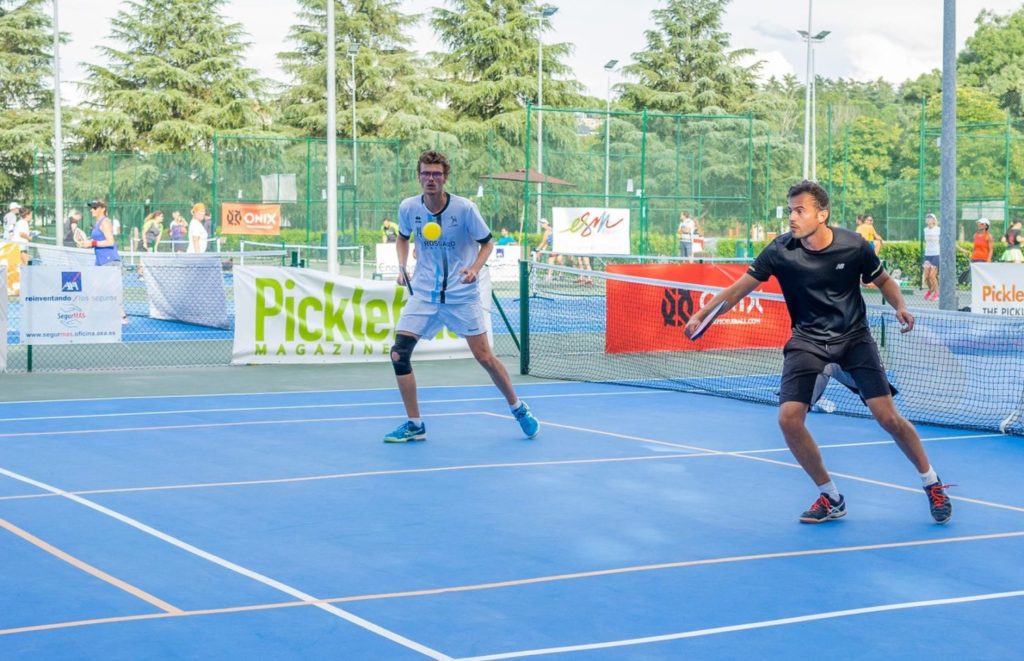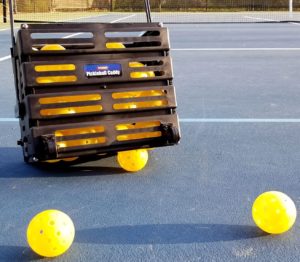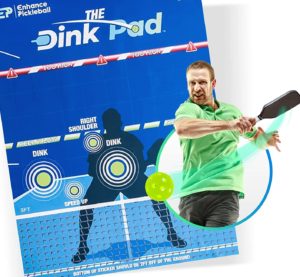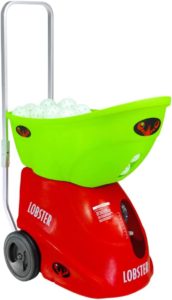Pickleball is a fun and engaging sport that has gained tremendous popularity over the years. One crucial aspect of pickleball is mastering the deep return, which can significantly impact your overall performance. In this article, we will provide you with tips and strategies for effectively returning deep serves in pickleball, helping you level up your game.
Understanding the Deep Serve in Pickleball
Definition and Explanation of a Deep Serve
A deep serve in pickleball is a powerful, high-arching serve that lands near the opponent’s baseline, forcing them to move back and return the ball from a less advantageous position. This serve is used to put pressure on the receiver and limit their offensive options.
The Purpose of Executing a Deep Serve
The primary purpose of executing a deep serve is to create an opportunity for the server to gain an advantage in the rally. By pushing the receiver to the back of the court, the server can establish better court positioning and control the point.
Challenges in Returning Deep Serves
Returning a deep serve can be challenging for several reasons:
The high trajectory and depth make it difficult to judge the ball’s landing point.
The power, depth, and spin on the serve can make it hard to control the return.
The receiver may be forced into a defensive position, limiting their shot options.
Getting pushed back in pickleball is always a disadvantage.
Importance of Footwork and Positioning
Proper Footwork Techniques for Returning Deep Serves
To effectively return deep serves, you need to master the following footwork techniques:
Split Step
The split-step is a small hop that helps you prepare for any movement on the court. As the server makes contact with the ball, perform a split-step to load your legs and be ready to move in any direction. Having your knees slightly bent will always allow you to move side to side or forwards and backwards easier.
Cross-Step
The cross-step is a quick, lateral movement that allows you to cover ground quickly. When returning a deep serve, use the cross-step to move towards the ball efficiently.
Shuffle Step
The shuffle step is a side-to-side movement that helps you maintain balance and control when moving along the baseline. Use the shuffle step to adjust your position and prepare for the return.
Importance of Positioning on the Court
Proper court positioning is essential for effectively returning deep serves. Consider the following guidelines:
Stand at an optimal distance from the baseline to give yourself enough time to react to the serve.
Position yourself to cover both forehand and backhand returns, ensuring you can handle any serve your opponent throws at you.
Techniques for Returning Deep Serves
Forehand Deep Return
Mastering the forehand deep return involves the following steps:
Proper Grip and Stance
Use a comfortable grip, such as the Eastern or Continental grip, to maintain control over your paddle. Adopt a balanced stance with your feet shoulder-width apart and knees slightly bent.
Using Body Rotation for Power
Generate power in your forehand return by rotating your hips and shoulders as you swing. This rotation will help you create the necessary force to send the ball back with depth and pace.
Contact Point and Follow Through
Ensure you make contact with the ball in front of your body and follow through with a smooth, controlled motion. This will help you maintain accuracy and control over your return.
Backhand Deep Return
To execute a successful backhand deep return, follow these steps:
Proper Grip and Stance
Use a suitable backhand grip, such as the Eastern backhand grip or Continental grip, for better control. Assume a balanced stance with your feet shoulder-width apart and knees slightly bent.
Generating Power from the Legs and Core
Generate power in your backhand return by engaging your legs and core muscles. Push off with your back leg and rotate your hips and shoulders to create the necessary force for an effective return.
Contact Point and Follow Through
Make contact with the ball in front of your body, and follow through with a fluid, controlled motion. This will help you maintain accuracy and consistency in your return.
Lob Return
The lob return can be an effective weapon against deep serves, providing the following benefits:
Benefits of Using the Lob Return Against Deep Serves
Forces the server to move back and play from a defensive position
Gives you time to reposition yourself on the court and prepare for the next shot
Execution of the Lob Return
To execute a successful lob return, follow these steps:
Use a relaxed grip and open the face of your paddle
Swing with a low-to-high motion, brushing under the ball to create topspin
Aim to land the ball deep in the opponent’s court, preferably as close to the baseline as possible
Drive Return
The drive return is an aggressive return option that can be used when you want to apply pressure on your opponent. The goal here is not to hit a winner, the goal is to be able to consistently hit your returns deep and low to push the server back on the court.
When to Use the Drive Return
Use the drive return when you anticipate a weak or short serve, or when you want to surprise your opponent with a quick, powerful return.
Generating Power and Accuracy
To generate power and accuracy in your drive return, focus on the following:
Engage your legs and core muscles during the swing
Maintain a firm grip and stable stance
Contact the ball in front of your body and follow through with a controlled motion
Strategies for Returning Deep Serves
Anticipating the Opponents Serve
Improve your chances of returning deep serves effectively by anticipating your opponent’s serve:
Recognizing Serve Patterns
Identify any patterns in your opponent’s serving habits, such as favoring one side of the court or consistently using a particular type of serve. This knowledge will help you better anticipate and prepare for their serve.
Reading Body Language Cues
Pay attention to your opponent’s body language during their serve, such as the position of their feet, hips, and shoulders. These cues can provide valuable information about the direction and type of serve they are about to execute.
Disrupting The Server's Rhythm
Throw your opponent off their game by disrupting their serving rhythm:
Varying Return Placements
Change the location of your returns, aiming for different spots on the court. This will force your opponent to adjust their positioning and can disrupt their rhythm.
Mixing Up Return Speeds and Spins
Incorporate different speeds and spins in your returns to keep your opponent guessing and prevent them from settling into a comfortable rhythm.
Consistency and Depth in Returns
Maintaining consistency and depth in your returns is crucial for effectively dealing with deep serves:
Importance of Deep Returns
Deep returns force your opponent to play from a defensive position and limit their offensive options, allowing you to control the point.
Training Drills for Improving Consistency
Practice drills, such as wall drills or partner drills, to improve your consistency in returning deep serves.
Mentaal Aspects of Deep Serve Returns
Staying Focused and Relaxed
Stay focused and relaxed when returning deep serves, as tension can negatively impact your performance. Use deep breaths and visualization techniques to maintain a calm, focused mindset.
Building Mental Toughnesss
Visualization Techniques
Use visualization techniques to mentally rehearse your deep return strategy and build confidence in your abilities. Visualize yourself successfully executing returns against deep serves, reinforcing positive outcomes in your mind. Literally imagine the ball hitting the spot you’re aiming for.
Practicing and Drills for Deep Return Mastery
Solo Drills
Improve your deep return skills with the following solo drills:
Wall Drills
Find a suitable wall and practice returning deep serves by hitting the ball against it. This will help you work on your timing, footwork, and shot accuracy.
Shadow Swings
Perform shadow swings without a ball, focusing on your technique and footwork. This will help you develop muscle memory and improve your overall deep return skills.
Ball Machine
Use a ball machine to simulate a deep serve while practicing a deep return. Remember, consistency is king. The more you practice a specific situation, the more comfortable you’ll be when you’re playing with people.
Partner Drills
Partner drills can be an effective way to improve your deep return skills:
Deep Serve and Return Practice
Take turns with a partner serving deep and returning deep serves. This will help both of you develop consistency and accuracy in your serves and returns.
Return Placement Drills
Work with a partner to practice placing your returns in different areas of the court. Use targets. This will help you develop better control over your shots and make it more difficult for your opponent to predict your returns.
Match Simulations for Game Time Situations
Simulate match situations by playing practice games that focus on deep serves and returns. This will help you apply the techniques and strategies you’ve learned in real-game scenarios, improving your overall performance.
Conclusion
Mastering the deep return in pickleball is a crucial skill that can significantly impact your overall performance. By understanding the importance of footwork and positioning, mastering various return techniques, and implementing effective strategies, you can effectively return deep serves and gain an advantage over your opponents. Remember to stay focused, build mental toughness, and practice consistently to continually improve your deep return skills in pickleball.
Incorporate some of the tips and strategies provided in other articles on our site, such as how to outsmart your opponents on the court and visualizing success in pickleball, to further enhance your game. The key to success is consistent practice and applying the knowledge you gain. Good luck on your journey to mastering the deep return in pickleball!
Please note that this blog post contains Amazon affiliate links. This means that if you make a purchase through one of these links, we at TPMSRESET.com may earn a small commission at no extra cost to you. We only recommend products that they personally use and believe in. Thank you for supporting this blog.





